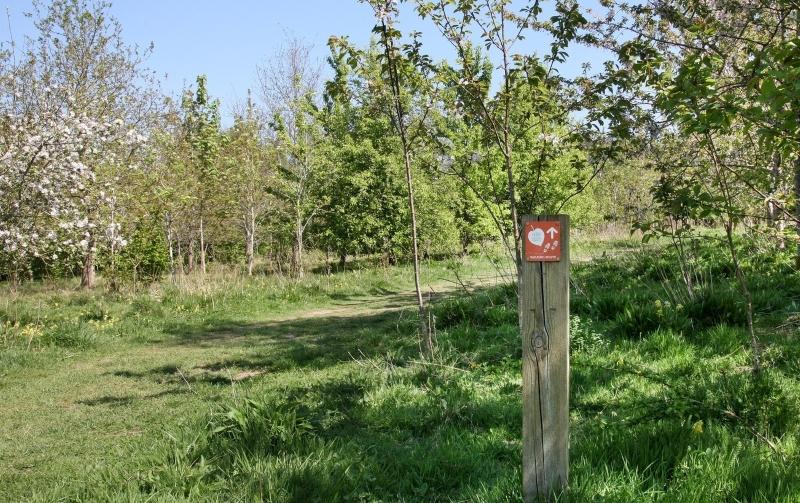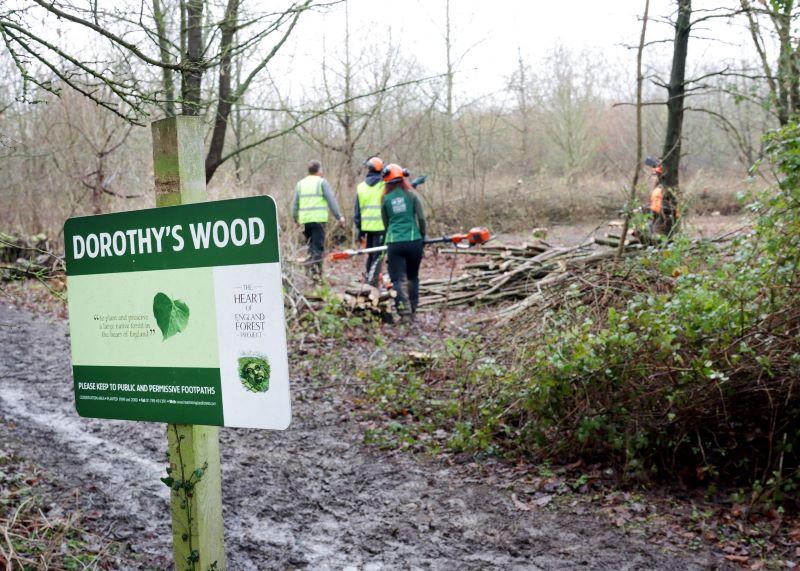
The impact of antisocial behaviour
The Heart of England Forest is a treasured place for its visitors, providing opportunities for exercise, relaxation, and connecting with nature. However, as seen in many areas of the country during the pandemic, an increase in the number of visitors has also led to a rise in incidences of antisocial behaviour. Despite being a small minority of people, these behaviours can have a large impact on both the natural environment and the charity.
A Forest for people
One of the charity’s key objectives is to encourage greater public access and to promote the joys and value of being outdoors. We are passionate about encouraging people to spend time in the Forest, and our staff, volunteers, and supporters all work hard to provide and maintain the public access routes in our woodlands.
While most people enjoying the Forest are respectful and follow the Countryside Code, we do experience incidents of inconsiderate behaviour that can have wide reaching consequences. Negative behaviour impacts not only other visitors, but also people working and living in the Forest, who then look to the charity to use its resources to find solutions. This is not just costly to the charity in terms of time and finances, but also reputationally.
Antisocial behaviour in the Forest
Problems such as fly tipping, illegal trail and quad bike riding, and livestock gates being left open are obvious examples of antisocial behaviour that can be dangerous to all and costly to the charity. There are other behaviours that have impacts on the charity that people may not be fully aware of.

Inappropriate and dangerous parking
Parking in gateways, driveways, on verges and on single track country roads, instead of using the Forest car parks, causes a range of issues.
While some visitors may think a gateway looks unused, and others may assume a landowner will not need access on an evening or weekend, our forestry and farming teams and neighbouring landowners always need access to their land, particularly for emergencies. Even partially blocking a gateway will prevent large agricultural or forestry machinery being able to turn in or pull out.
We experience situations where the forestry team have completed mowing pathways for public access, only to blocked in by a visitor’s vehicle and prevented from completing their work schedule for the day or finishing to leave work on time. We have known of local livestock owners unable to check on their livestock before daylight is lost because gateway parking stopped access.
Parking on roadside verges (particularly on bends, junctions and from private tracks and driveways) can reduce visibility of pedestrians and other road users, damage flora, and even create an obstruction, particularly on single track or narrow country lanes which throughout the year are used by large agricultural machinery. There are concerns also that should emergency services be prevented from passing by or from accessing a gate, lives could be put at risk or even lost through inconsiderate parking.
When visiting the Forest, please use one of the six Forest car parks or other formally recognised parking area. If you arrive to find a car park full and do not wish to wait for a space to become available, then please try another nearby car park or visit another time. Do note the closing time of the car park, which is shown on the entrance signs, to prevent your vehicle being locked in, or for a staff member to have to give up their free time in an evening waiting for all vehicles to vacate.
Straying from footpaths
Please stick to the walking routes when enjoying the Forest, whether following our permissive routes or exploring the public rights of way across the Forest and adjoining land.
Public access needs to be managed for many reasons including the health and safety of people visiting, the protection of flora and fauna, the safekeeping of livestock, and out of respect for our neighbours. While we give a pass to wild mammals making their own trails through the Forest, we do expect people and their dogs to remain on the footpaths planned and maintained by our team.
Equally we expect our visitors to respect that a fence, hedge, or locked gate means no access at that point, not to simply push through or climb over – unless there is a stile which would indicate a public right of way.
Occasionally we may need to temporarily close a section of permissive or public footpath. Usually this is for public safety and because the route is either blocked, has been assessed as unsafe, or because dangerous forestry work is taking place. Please respect any footpath closure notices and barriers.

Unfortunately, we regularly experience people ignoring signage, crossing caution tape/barriers, and even approaching our team while they are using chainsaws, to enquire what is going on! While we are happy to talk about our work, there is a right time and place and in this situation the repercussions could clearly be very dangerous for all involved. We will always be doing our best to get these sections re-opened as soon as it is safe to do so.
For those exploring beyond the Forest’s permissive routes on public rights of way, please follow an Ordnance Survey map or similar and always remain on the recognised routes. A public footpath along one edge of a field or garden land does not mean walkers can roam freely across the whole field or use it to have a picnic. This is an issue some of our neighbours have reported to us, along with members of the public walking or climbing into their private paddocks and gardens.
In these circumstances, we are often the first port of call for such grievances, sometimes from our neighbours who want us to look at restricting or controlling access in other ways to protect their property and privacy, and other times from the visitor who feels unjustly met by a disgruntled landowner.
The charity team members do their best to deal with the repercussions of both sides of these situations, which would rarely occur if everyone spent a few minutes looking at or downloading a map and considering the impact on those living in the area, wildlife and neighbours included, as well as their personal safety by remaining on the promoted routes.
Heart of England Forest walking maps are available to view and download on our website, and information boards are being added to all Forest car parks. Please check to see where footpaths offer access, and if in doubt follow the markers of a waymarked route.

Dog issues
Walking in the Forest is mutually beneficial to both human and hound, but as with public access, pooch access comes with responsibilities so that all Forest users, along with the wildlife and livestock living in the woodland, get to enjoy being there too. While we know most dog owners take these responsibilities seriously, we do have to invest time dealing with comments and complaints regularly regarding antisocial dog issues.
Not all children, adults or indeed dogs trust other dogs or like being approached by even the friendliest four-legged friend, so please do always keep your dogs under effective control and in sight. If this is not possible, we ask you to put dogs on a lead.
Both the Heart of England Forest and other local farmers unfortunately experience incidents of livestock being chased by dogs, which can result in death of an animal or for a ewe to abort her lambs, and occasionally dog attacks on other animals and horses. This is very distressing for all involved and has a financial impact on the charity and any livestock owner when it does occur. These situations are avoided if dogs are kept on leads around any farm animals.
Occasionally livestock worrying incidents are reported to us by the dog owner or other witnesses, which thankfully allows us to check the animals and deal with any immediate welfare issues the best we can.
Livestock will be found in and alongside the Forest and is regularly moved between grazing grounds. Please take note of our livestock grazing signs and remember that cattle or sheep can be out of sight if the land is undulating or there are trees, hedges, or fences for them to hide behind. Dog mess which carries parasites could also be responsible for livestock illness and death – so please bag it and bin it at all times when you visit the Forest.
Bag it and bin it
We often have reports of dog mess left in the Forest, including in poo bags, sometimes hanging on trees. Please consider that as well as walking the footpaths, our volunteer and staff teams work amongst the trees and in the long grasses in the summer, so ‘stick and flick’ is not always a good alternative.
Dog bins are provided in each Forest car park at a significant annual investment to the charity, so please use them. While they are emptied by staff regularly, if they happen to be full then please do take your dog bag away with you.
Tackling antisocial behaviour in the Forest
The Heart of England Forest has an ambitious vision to create and conserve a 30,000 acre Forest. By being able to focus our resources on this aim, to benefit both people and wildlife, we will achieve this sooner, and everyone making use of the Forest can play their part.
Visitors can help by parking in the Forest car parks, planning routes and enjoying the specified permissive and public footpaths, being a responsible dog walker, and having respect and consideration for our neighbours, volunteers, staff, wildlife, and the beautiful British countryside.
You can support our work growing and maintaining a Forest for people by becoming a Friend of the Forest.



